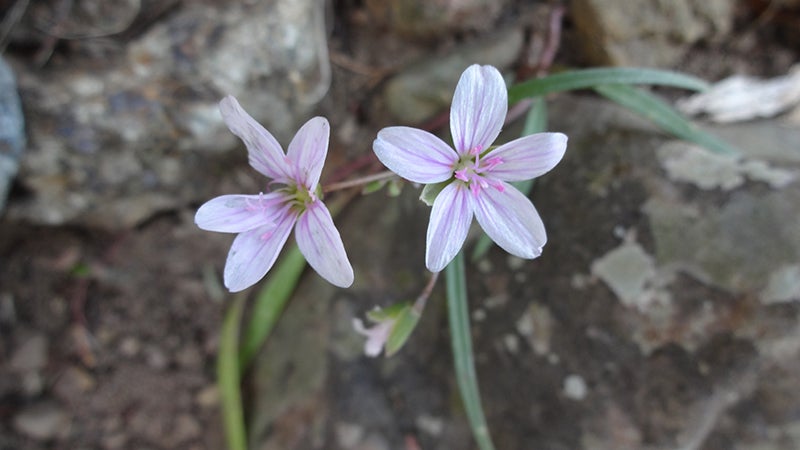Spring Beauty lives up to its name
Published 3:26 pm Tuesday, April 17, 2018

- Growing naturally in all Virginia counties except those in the extreme southwest, Spring Beauty prefers organically rich, moist, well-drained soils, in full sun to part shade.
|
Getting your Trinity Audio player ready...
|
Helen Hamilton
Spring Beauty
Claytonia virginica
Spring Beauty, well named, is a delicate spring ephemeral with loose clusters of star-like white to light pink flowers; the petals are striped with pink veins and the anthers are also pink. This small plant is spectacular in large patches. Flowers bloom in April on top of thin stems 4-6 inches tall; dark green grass-like leaves continue to grow after bloom, and may eventually reach 9-12 inches tall before the leaves disappear in late spring as the plants go into dormancy.
Spring Beauty grows from an underground corm, similar to a small potato, which has a sweet, chestnut-like flavor. Native Americans and colonists used them for food and they are still enjoyed by those interested in edible wild plants, but are time-consuming to collect in quantity sufficient for a meal. Spring Beauty appears in The Song of Hiawatha as “Miskodeed,” according to author Timothy Coffey.
Growing naturally in all Virginia counties except those in the extreme southwest, Spring Beauty prefers organically rich, moist, well-drained soils, in full sun to part shade. The plant naturalizes easily by corm-offsets and self-seeding.
The genus name honors John Clayton (1686-1773,) clerk to the County Court of Gloucester County, Virginia, from 1720 until his death, and regarded as the greatest American botanists of his day. He was one of the earliest collectors of plant specimens in Virginia. The local chapter of the Virginia Native Plant Society is named the John Clayton Chapter in his honor.
HELEN HAMILTON is past president of the John Clayton Chapter, Virginia Native Plant Society. Contact her at helen48@cox.net. For more information about native plants, visit www.vnps.org.

